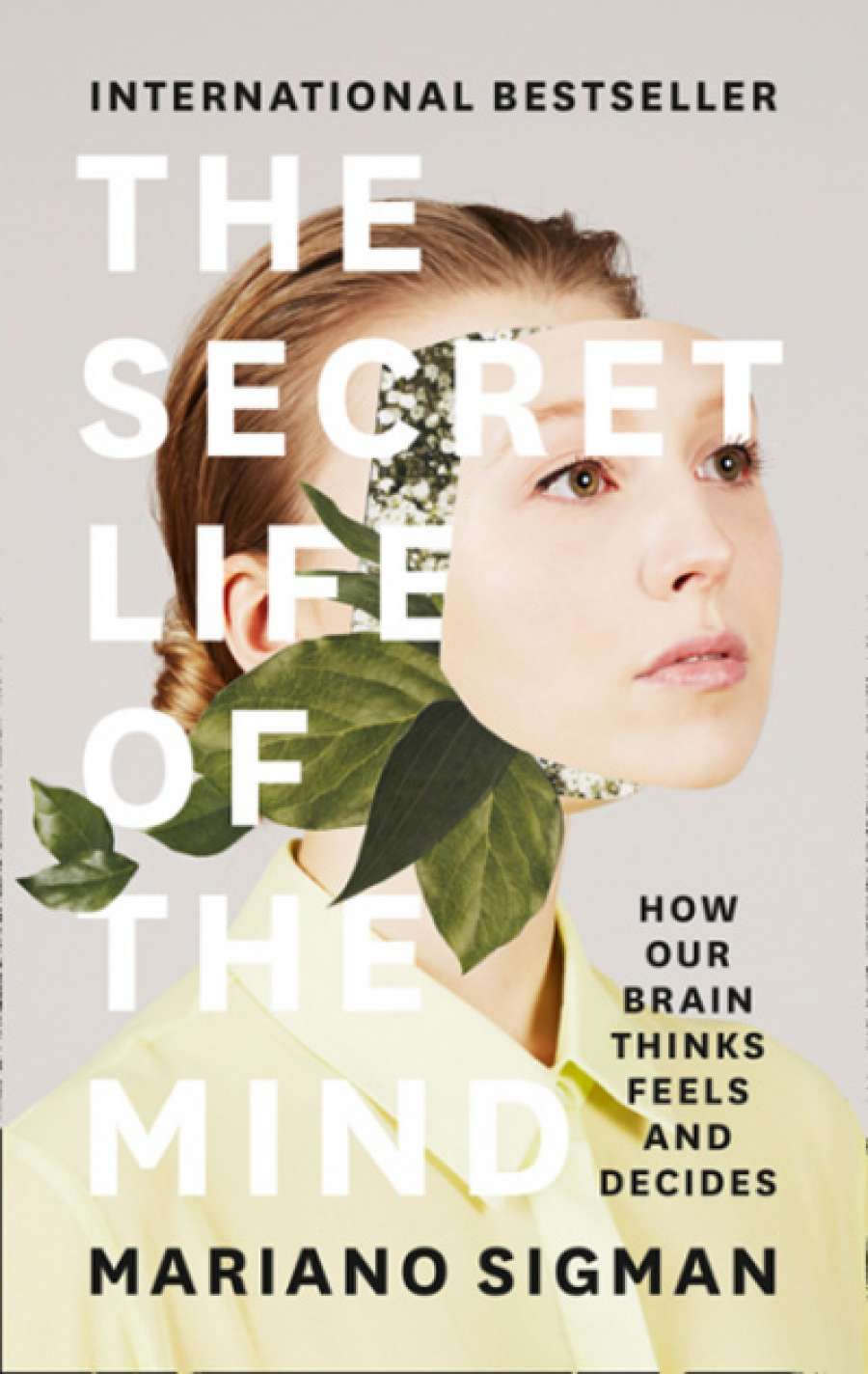
- Free Article: No
- Contents Category: Science and Technology
- Custom Article Title: Nick Haslam reviews 'The Secret Life of The Mind: How our brain thinks, feels, and decides' by Mariano Sigman
- Review Article: Yes
- Online Only: No
- Book 1 Title: The Secret Life of The Mind
- Book 1 Subtitle: How our brain thinks, feels, and decides
- Book 1 Biblio: William Collins, $32.99 pb, 267 pp, 9780008225568
After discussing infancy, Sigman moves on to the study of decision making in a chapter that bounces frantically from topic to topic and puzzlingly claims to be about the borders of identity. It starts with the role of gut feelings and intuitions in choice (they may be more reliable than rational deliberations when we face more complex decisions), moves on to the influence of pheromones on desire, jumps to the downsides of optimism and empathy (one promotes risk-taking, the other erodes impartiality), and finally, explores the challenges of self-control and social corruption.
More successful are a pair of chapters on consciousness and its vicissitudes, notably hallucinations, dreams, and drug-altered states. Sigman is compelling on the neural basis of consciousness, which he presents as an electrical reverberation through the brain’s neural networks when a stimulus reaches a threshold of excitation. He is equally lucid when discussing the ownership of experience. Auditory hallucinations in psychosis may represent a failure to recognise the personal authorship of inner voices, and our inability to tickle ourselves occurs because knowing our intentions undermines our capacity to surprise ourselves. One researcher has overcome this problem by designing a mechanical tickler with an inbuilt half-second delay, enough to fool the user that the provoking touch is alien to the self.
The Secret Life of the Mind concludes with two chapters on learning and teaching. Much learning involves a process of automatisation through practice, in which slow and deliberate effort gradually develops into rapid and unthinking competence. Sigman argues that this process involves a movement from the top of the brain to the bottom, from ‘dorsal’ to ‘ventral’, a distinction much less familiar to most readers than left brain versus right brain, the focus of much pseudoscience and dualistic claptrap. Learning comes easy to us and our brains are always transforming, but teaching come naturally as well, Sigman going so far as to propose we have a ‘teaching instinct’. His enthusiasm for exploring the pedagogical implications of neuroscience shines brightly.
 Mariano Sigman (left) and Dan Ariely speak at TED2017
Mariano Sigman (left) and Dan Ariely speak at TED2017
(photograph by Bret Hartman / TED, Flickr)
The book skips along at a rapid pace, enlivened by good-humoured asides and a Latin American sensibility that litters the text with references to Borges and soccer stars. Numerous experiments are described to give concreteness to abstract ideas. The book’s weaknesses are chiefly matters of framing. It is set out as an exploration of how the brain works its cognitive magic, but most of the evidence it musters is brainless. Much of it comes from psychological, economic, linguistic, and educational research on mind and behaviour, with no direct examination of the brain or reference to its processes. In doing so the book follows the common pattern of popular neuroscience gradually purloining psychology’s territory. Sigman recognises this land-grab when he dismisses the ideas of a left brain/right brain quack – ‘referring to the brain ... only served to appropriate the prestige of a scientific field for marketing purposes’ – but his book is not entirely innocent of the same appropriation. Of course, minds emerge from brains, but re-describing behavioural and cognitive science as neuroscience involves a degree of over-reach.
Even so, Sigman’s book largely succeeds in its mission of making thought transparent. Readers who want to understand the limitations of the tabula rasa view of the mind might be better off reading Steven Pinker’s The Blank Slate (2002), those interested in the mental capability of infants might prefer Alison Gopnik’s The Philosophical Baby (1998), and those eager to understand the neuroscience of consciousness might more profitably read Stanislas Dehaene’s Consciousness and the Brain (2014). But for those keen to buckle in for a charming jaunt through all of these scenic topics, The Secret Life of the Mind is a transporting read.


Comments powered by CComment